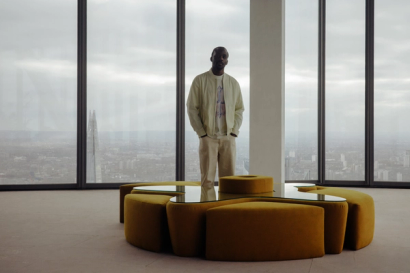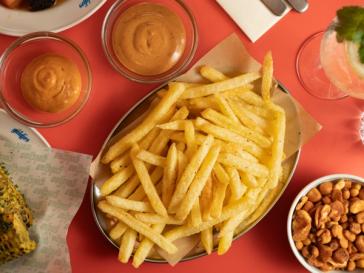

Shoe brands come and go. There’s a new loafer business dipping its toe into the overfilled waters everyday, only to fall flat on its soles and go out of business less than a year later. You can blame TikTok’s fickle audience for that. Moreover, every fashion label, high and low, is trying to make decent shoes, from chukkas to slip-ons, to no avail. They just don’t cut it. They don’t really last. Soles come apart. Seams tear. And they squeak. And so, more often than not, you’ve just got to leave it to the experts. Those that are deep rooted in heritage, and in turn have the background to deliver the best footwear possible. Those that truly understand the formula behind making good shoes. The people that really get what goes into an excellent pair of shoes. And for that reason you ought to head to Crockett & Jones.
The British shoemaker was founded in 1879 by two brothers-in-law, James Crockett & Charles Jones, and began as a small-scale producer of men’s boots. Sturdy gear designed to stand the test of time, with generations of expertise behind it. James’ grandfather, Henry Marshall, was already an established shoemaker, for whom James became an apprentice. Charles too was from a line of respected shoemakers.
Crockett & Jones was initially based on Exeter Road, Northampton, and here one of Britain’s success stories was about to begin. The business has passed through five generations. No mean feat, and to put into perspective, only a handful of brands out there are still family owned: Hermès, Fendi and Armani among the most famous. By the 1880s the business was doing so well that it needed to up roots and expand, which led to a move to a larger factory that also allowed for the installation of an innovative Goodyear machine. The pièce de résistance of shoemaking, designed by American Charles Goodyear. A stellar piece of machinery that is still in use today, it allowed for stronger “Goodyear” welts, and the brand was one of the first few in England to have it. While today’s bright young brands rarely incorporate it into their designs, Crockett & Jones hasn’t given up on it. A strip of leather runs around the edge of the upper part of a shoe, and holds the components together. The leather that attaches the upper to the outsole is stitched and cemented instead of cheaply glued. It’s not an easy business, but it's a signifier of decadent shoes and takes a staggering eight-week period to complete. Fast fashion this is not. Crockett & Jones was, and still is, top shelf stuff.
Around the same time the business was taken over by the next gen: Fred and Harry Crockett, and Frank Jones. But they only helped to build on the incredible structure that their relatives had raised. By the 1910s the brand was scooping awards - notably the Diploma of Honour at the International Manufacturing exhibition - for its shoes. By the time Britain was engulfed in war, Crockett & Jones, recognised for its unbeatable, hard-wearing footwear, was enlisted to produce over three million pairs of shoes and boots for officers in both the First & Second World Wars. James Crokett was knighted, King George VI became a super fan. During the golden age of exploration, Crockett & Jones was enlisted to create shoes for individuals partaking on extravagant polar trips to the Antarctic, notably Ernest Shackleton’s 1914 Endurance Expedition.
In 2024 Crockett & Jones is still making some of the best shoes on the planet. Sure it has slightly remodelled - the 1970s saw a need for this as mass production markets boomed - but its commitment to solid shoes remains. Sole focus is still placed on producing only the highest quality Goodyear-welted items, just like the brand’s founding fathers wanted.Its factory, where also lies its head office, is in inner-city Northampton. It’s the beating heart of the brand. And Crockett & Jones' standing in menswear is undebatable. It’s the crème de la crème of fine footwear. Its shoes are the caviar of the shoe industry. There really is nothing better. “This year, Crockett & Jones turns 145. That’s years,” says James Fox, head of marketing at Crockett & Jones. “Much time has passed since our founders, Sir James Crockett & Charles Jones, joined forces, and none of our forefather's achievements or mistakes are forgotten or taken for granted.”
The thing about Crockett & Jones is that the business doesn’t depend on flash-in-the-pan fads and trends to succeed. It makes classic shoes in a classic way, as devised by its founders, that has been proven to work. Timeless charm meets unrivalled craftsmanship. The shoes are burnished to perfection. It's like a greatest hits of men's shoes, and everybody who understands the power of excellent footwear invests in a Crockett & Jones shoe. Daniel Craig decided to upgrade and wear Crockett & Jones shoes (notably a toe-capped Derby and a monk boot) for his final outings as James Bond. Prince William trod the red carpet at the London premiere of Top Gun: Maverick in 2022 in a pair of custom velvet slip-ons, which nodded to the film and came with embroidered F-18 Super Hornets on the uppers. The NBA’s Lebron James has even been known to sport a pair of Crockett & Jones’ Lowndes monk shoes on the red carpet.
And as it turns 145 years old, Crockett & Jones has certainly proved its standing in the footwear arena. With over a century of shoemaking prowess keeping it alive, the brand is only going from strength to strength. “Classic menswear is cyclical, and Crockett & Jones has been around the house many, many times,” Fox says. “Each time improving, taking small, manageable steps forward in quality, fit, comfort and design.”
Need some wardrobe essentials to go with your Crockett & Jones shoes? Check out these timeless items that will only get better with age



